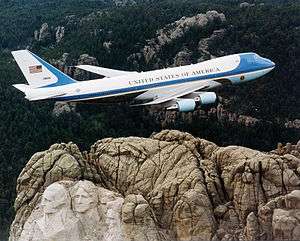Military call sign
Military call signs are call signs assigned as unique identifiers to military communications. In wartime, monitoring an adversary's communications can be a valuable form of intelligence. Consistent call signs can aid in this monitoring, so in wartime, military units often employ tactical call signs and sometimes change them at regular intervals. In peacetime, some military stations will use fixed call signs in the international series.
United States military

The United States Army uses fixed station call signs which begin with W, such as WAR, used by U.S. Army Headquarters. Tactical call signs are often assigned to a company sized unit or higher. For example, the collective "Checkmate" might be assigned to an entire company and thus "Checkmate 1 Actual" would be the first platoon leader, "Checkmate 2 Actual" to the second platoon leader, etc. "Checkmate Actual" is the Company Commander and "Checkmate" is the captain's radio-telephone operator (or other designee, such as the XO). This system can be extended to squad or fireteam level by adding another number, for example the squad leader of the second squad of the third platoon in Checkmate company would have the call sign "Checkmate 32", pronounced "three-two". Additionally, only the squad leader proper will answer to the call sign "Checkmate 32 Actual", whereas the squad leader's radio-telephone operator (or other designee) will answer to the call sign "Checkmate 32" (without the "Actual") as a matter of routine. Also, companies often have the letter they are designated by ('A', 'B', 'C' or 'D') be the first letter of their call sign. This means a 'C' Company could potentially have 'Checkmate' as its call sign.
Fixed call signs for the United States Air Force stations begin with A, such as AIR, used by USAF Headquarters. The USAF also uses semi-fixed identifiers consisting of a name followed by a two or three digit number. The name is assigned to a unit on a semi-permanent basis; they change only when the U.S. Department of Defense goes to DEFCON 3. For example, JAMBO 51 would be assigned to a particular B-52 aircrew of the 5th Bomb Wing, while NODAK 1 would be an F-16 fighter with the North Dakota Air National Guard. Individual military pilots or other flight officers usually adopt a personal aviator call sign.
The most recognizable call sign of this type is Air Force One, used when any Air Force aircraft is transporting the U.S. President. Similarly, when the President is flown in a U.S. Marine Corps helicopter, the call sign is Marine One. When then-president George W. Bush, a former Air National Guard fighter pilot, was flown to the aircraft carrier USS Abraham Lincoln in a Navy S-3B Viking, it was the first use of the "Navy One" call sign.
The United States Navy, United States Marine Corps, and United States Coast Guard use a mixture of tactical call signs and international call signs beginning with the letter N. For example, the carrier USS John F. Kennedy had the call sign NJFK for unclassified and navigation communications with other vessels, but uses tactical call signs that vary with its mission. In tactical situations, the Marine Corps utilizes call signs naming conventions similar to the Army's.
United Kingdom military
Tactical voice communications ("combat net radio") use a system of call signs of the form letter-digit-digit. Within a standard infantry battalion these characters represent companies, platoons and sections respectively, so that 3 Section, 1 Platoon of B Company might be F13. In addition, a suffix following the initial call sign can denote a specific individual or grouping within the designated call sign, so F13C would be the Charlie fire team. Unused suffixes can be used for other call signs that do not fall into the standard call sign matrix, for example the unused 33A call sign is used to refer to the Company Sergeant Major.
The letter part of the call sign is not the company's letter (B vs F in the above example). Instead, letter designations are randomly assigned using BATCO sheets, and appear on CEIs (communication electronic instructions), and change along with the BATCO codes every 24 hours. This, together with frequency changes and voice procedure aimed at making every unit sound the same, protects the military against simple traffic analysis and eavesdropping. Other radio users, like B20, do not fit into the standard battalion model but are also assigned a call sign for protection.
The controller of each net has the call sign 0 ("zero"). There may also be a second controller - either a backup station or a commander who has delegated communication tasks to a signaller but may occasionally wish to speak in person - using the call sign 0A ("zero alpha").
Earlier systems used a series of appointment titles to identify users and individuals, "Sunray", for instance, referring to the appropriate leader. Most appointment titles are no longer used by the British Army, but titles such as "Sunray" and (Sunray) Minor are still used.[1] Several other armed forces still use appointment titles, including the Australian and Canadian army.
| Ser | Appointment | Title |
|---|---|---|
| 1 | Commander (Battalion, Company, Platoon) | SUNRAY |
| 2 | Second-in-command | SUNRAY MINOR |
| 3 | Adjutant | SEAGULL |
| 4 | Intelligence Officer | ACORN |
| 5 | Quartermaster | MOLAR |
| 6 | Armour | IRONSIDE |
| 7 | Artillery | SHELLDRAKE |
| 8 | Engineer | HOLDFAST |
| 9 | Signals | PRONTO |
| 10 | Infantry | FOXHOUND |
| 11 | Medical Rep | STARLIGHT |
References
- ↑ "British Army Appointment Titles". Retrieved 27 November 2012.